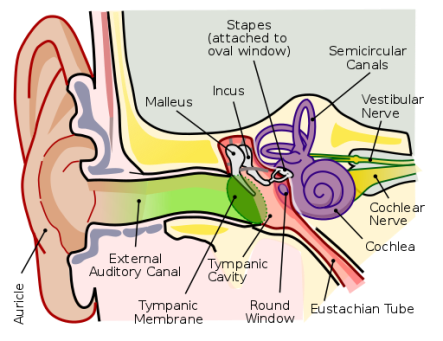
This is a fun, silly, and educational activity that any kid who likes to make noise will love. Using oobleck (a mix of cornstarch and water) and common household items, you will be able to visualize the sound waves made when you yell!
What we perceive as sound is a wave of pressure transmitted through air. When you yell, your vocal chords vibrate. The energy is transmitted by air molecules smacking into each other, until they they smack into your ear. There, you have cells that can convert the vibrations into electrical signals which are transmitted to and deciphered by your brain. In this activity, you will yell into a device that will transmit your sound waves from air into oobleck so you can see the waves!
Definitions
- SOUND: Kids will probably know what sound is, but not scientifically. Sound is vibrations that travel through a medium (usually air) which are eventually heard by ears. Kids will need to understand that air, even though we can’t see it, is all around us and can be moved similarly to the way balls move, like billiards. Try waving your hand quickly so they can feel the wind it creates. You can tell them air molecules can move to carry the energy from your hand to their skin so they can feel it. Sound also travels through air in a similar way, but sounds are made when something is wiggling the air much fast than your hand can move it. Roll a ball into another ball and talk about how the energy is transferred when the first ball hits, and use this analogy for air transmitting sound.
- VIBRATION: To young kids, I like to explain this as fast wiggles. Since you know your kid the best, to define this word, you can draw on experiences you know they have had like the vibration of an old car going down the highway. You can also put their hands on one end of a table and have them feel the vibration of you knocking at the other end of the table. They probably have experienced vibration, but just need to connect the word with the phenomenon.
Materials
- cornstarch
- water
- empty paper towel or toilet paper tubes
- tape
- rubber bands
- thin flexible material like plastic wrap, latex, thin rubber sheet, nitrile (I cut a square from nitrile gloves)
Method
- Cut the paper towel roll twice diagonally, as seen in the picture.

- Flip the two end pieces up to form a U shape, then tape them together. (Or make into whatever shape you want. You basically want to be able to simultaneously yell into it and see the flexible membrane. The one below is what my daughter made from toilet paper rolls.).

- Cut your thin flexible material into a square that will fit over the end of the paper towel tube.
- Secure the square to the tube with a rubber band, making sure the membrane is taut like a drum.
- To make the oobleck, mix about 2:1 cornstarch to water together (you can make a lot to play with it later, but for this activity, you only need about a teaspoon). You will know it’s the right consistency when you can smack the oobleck and it acts like a solid, but you can also slowly pour it as if it was a viscous liquid. Just add a little more cornstarch or water to get this consistency.
- Put about an eighth teaspoon of oobleck onto the drum end.
- Make all sorts of sounds into the open end of the paper towel roll and watch the oobleck dance about! Constant, steady low or high sounds work the best, but experiment to see what you can make!
Discussion
When you scream into your device, kinetic energy is being transferred from your vocal chords, through the air molecules in the tube, to the membrane, to the oobleck. Note how the oobleck is formed into different shapes depending on the pitch of your noise.
You can use this experiment to talk to your kids about eardrums (aka tympanic membrane) by comparing them to the membrane on the device. Just as the screaming-device-membrane transmits sound from air in the tube to the liquid oobleck on top, your eardrum essentially transmits sound from the air in the ear to liquid in the cochlea.

This project can also be done by wrapping a speaker in Saran Wrap, putting some oobleck on it, and playing your kids’ favorite songs. It’s a great visual introduction to rhythm, beat, and volume and will give them a whole new musical experience.



One thought on “See Sound with Oobleck!”